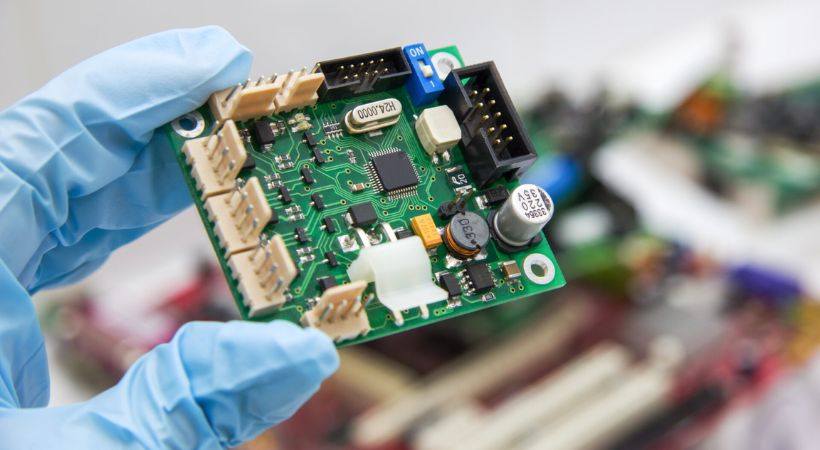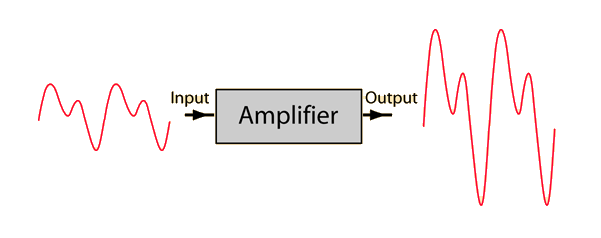There are various types of components but we can broadly classify them into two categories: active components and passive components.
The active components require external power to operate. The components that don’t require any external power for their operation are called passive components. The transistors (BJTs), operational amplifiers, integrated circuits (ICs), MOSFETs, IGBTs, and SCRs are active components. The passive components are resistors, capacitors, inductors, switches, diodes, transformers, and relays are passive components.
In this article, we are going to know exactly what is active and passive components and how can we differentiate them.
Types of components
You know, when we deal with any devices i.e. your phone or laptop. We know for sure it would need electrical power to operate properly. The same is true for electronic components.

The components are into two categories depending upon the power delivering and dissipation ability.
Active components and passive components are the types of components.
The main difference between these two is that an active component can supply power to the electronic circuit while a passive component doesn’t supply power, it only absorbs power in the circuit.
1. Active Components
Active components are electronic devices that require an external power source to perform their functions. They can supply power to the circuit and they are all responsible for controlling the flow of current in the circuits.
They can control, amplify, or switch electrical signals.
Key characteristics:
- Ability to amplify electric signals
- Required external power supply
- control the flow of current
- These components have a non-linear response
Examples of Active components:
Let’s have a lot of active devices. An easy way to determine an active element is to just look at it and see if it needs a voltage source to work or turn on.
- Transistors (BJTs)
- Operational Amplifiers
- Integrated Circuits (ICs)
- MOSFETs
- JFETs
- IGBTs
- SCRs
2. Passive components
Passive components are fundamental elements that do not require an external power source to perform their basic functions. They only absorb electrical energy and dissipate it in the form of heat or store it.
In an electric circuit, a passive component cannot supply electricity or power amplification.
Key characteristics:
- No signals amplification
- Do not require an external power supply
- These components have a linear response
- Store and dissipate energy
Examples of passive components:
To determine if the circuit element is passive, just look at it and try to analyze if it really needs a voltage source to turn on.
- Resistors
- Capacitors
- Inductors
- Switches
- Connecting lines
- Diodes
- Transformers
- Relays
Differences between Active & Passive components
The biggest difference as I already shared is that – active components require external power for their operations while passive components don’t
Now with that said let’s try to talk about some other advanced differences between active and passive components.
1. Capacity to deliver energy
Active components can deliver power/energy to the circuit or other components, while passive components can’t do it.
As one can note how can passive components deliver power as they don’t have any external power attached to them.
Active components can do so because they have access to the external power source, which they can utilize and can deliver to other circuit blocks.
Energy can be in the form of voltages or currents – it depends on the situations and requirements of the circuit or system.
2. Donors & acceptors
Based on the above concept, we can say active components are power donors, while passive components are power acceptors.
Why donors, because they denoted or deliver their power to other elements in the circuits. Passive are called acceptors as they accept power from the active components or sometimes directly from the main power source.
3. Gain
The concept of gain is – a measure of the ability of a two-port circuit to increase the power or amplitude of a signal from the input to the output port by adding energy converted from some power supply to the signal.
As it is required by gain definition to have a power supply, then we can say for sure that – active components can provide gain while there is no gain while working with passive components
It is a little advanced term – passive components have negative gain, i.e. there is power loss in these elements.
4. Amplification
Amplification means to increase the power of a weak signal. Amplifiers are circuits used to achieve such tasks.

Transistor as amplifier
Amplification is very useful in electronics. Active components can amplify weak signals, such as transistors. However passive components don’t have any capability of amplification.
5. Current control
Active elements can control the current or any signal flow through them. Such as in transistors, by changing the base current, we can control the collector current.
While with a passive element, we are not able to control current flow. But we do use them for signal limitation. Such as a resistor – we use it to limit the current flow to the circuit.
6- Mathematical operations
Active components, not all of them, are able to do some mathematical operations. For example, operational amplifiers.
While on the other hand, passive components can’t perform any such mathematical operations.
Conclusion
When you are working with electronic circuits, you will come across different types of components
In this article, we try to learn about types of components: Active and passive components with some examples. We also try to learn some differences between these two major electronics components.
The components that require external power for their proper operations are called the active components, while components that don’t require any power source are called the passive components.
Examples of active components are transistors, and ICs while examples of passive components are resistors and capacitors.
I hope you enjoyed this short article. Thank you so much and have a grateful life.
**We learned about various types of circuit components. As beginner you can next explore what exaclty is through-hole and SMD components!
